Save body movements!

In the 1920s and 30s Bookkeeping has been affected by many campaigns and “scientific” trends. A story about one of these trends, relating to human physiology , and about the scientific institution that dealt with this issue.
Have you heard anything about cyclography and the Central Institute of Labor?
Cyclography is the study of the sequence of movements performed by a person by photographing them. Since the beginning of the last century, the method has been widely advertised: they tried to adapt it to many areas of activity, including bookkeeping.
But let's get it in order.
The view of man as a mechanical device, the movements of which must be studied and improved, originates ... probably, from the work “Man-machine” (1747) by a French doctor and philosopherJulien La Mettrie . This work was very timely translated into Russian - in 1911.
The directories refer to the names of foreign researchers Marey, Brown, and Fisher, who were involved in cyclography at the end of the 19th century. I can’t say anything about those mentioned: the achievements and recommendations of cyclography were presented to domestic accountants by the Central Institute of Labor (CIT) under the leadership of Alexei Kapitonovich Gastev . This happened in the 1920s. last century.
Here is this man, Alexey Kapitonovich Gastev, the head of CIT, a very remarkable person:
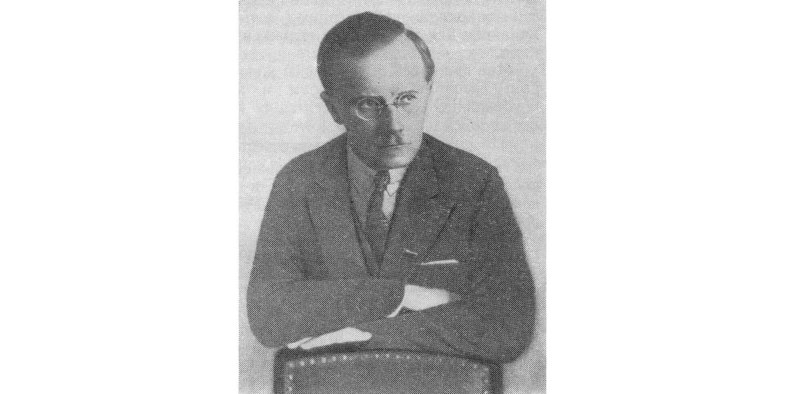
Gastev’s biography is easy to find on the Web: a professional revolutionary, and in Soviet times, a scientific and administrative worker. The main thing is not posts, of course, but energy, which lashes over the edge in his numerous books and articles. In short, Alexey Kapitonovich Gastev was a fanatic of the idea of improving the human body and acted in this direction with crushing energy.
The building of the Central Institute of Labor (Moscow, Petrovka, 24), headed by Alexei Kapitonovich Gastev. Even then it was clear that CIT and Gastev were inseparable from each other.

And these are the emblems of the scientific laboratories of CIT. It immediately becomes clear what the point is. In modern scientific laboratories, such emblems are not representable, in my opinion.
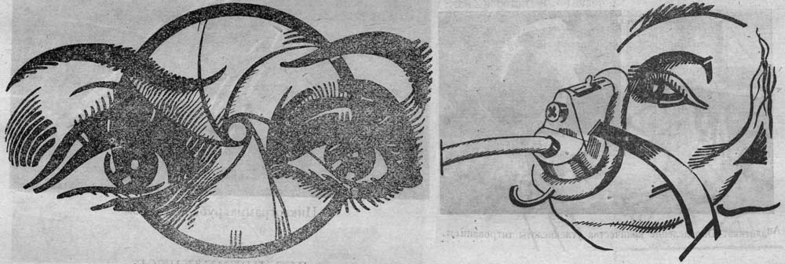
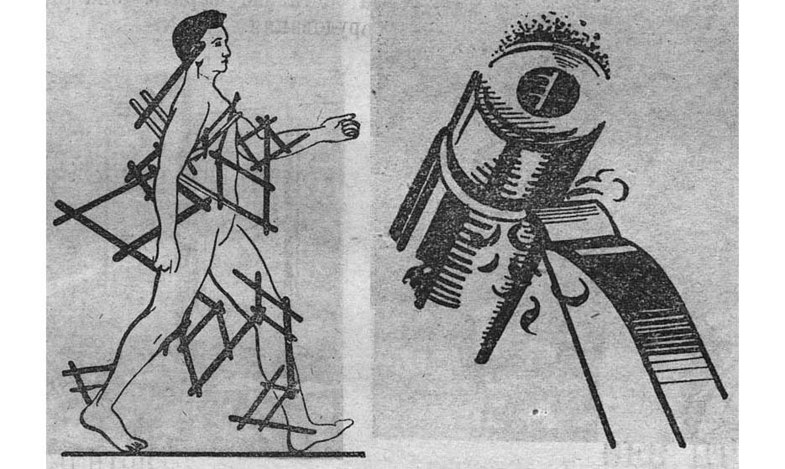
If the emblem’s orientation does not reach anyone, they were at the service of Cytonic slogans. The means of visual agitation explicitly, with a young revolutionary enthusiasm, reported how physiologically perfect Soviet people should become. Almost according to pre-revolutionary Chekhov: everything should be fine in a man ...
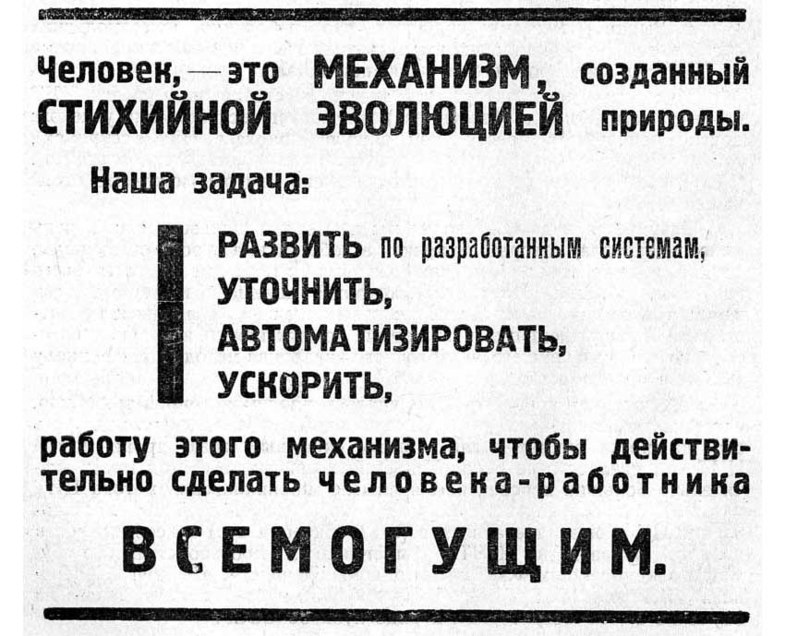
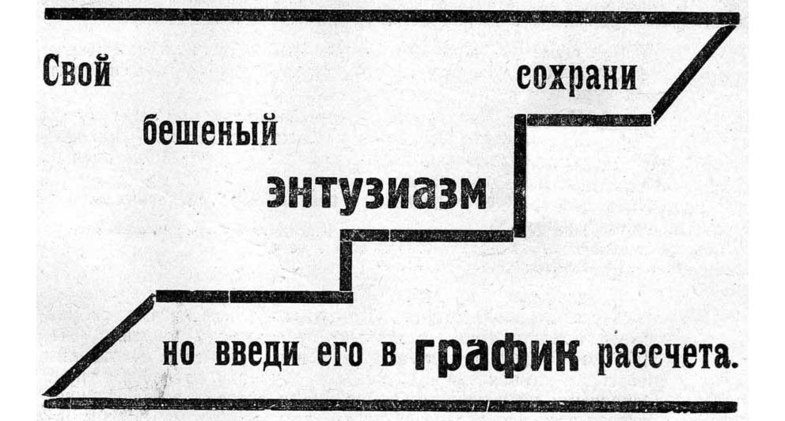
About the frenzied enthusiasm, which is mentioned in the slogan, is not a bit of a nonsense: Alexey Kapitonovich Gastev was such frenzied enthusiasm and forced others to obey.
Please, CIT employees on the roof of their institution are studying motor culture (others would say they are engaged in industrial gymnastics, but this is what anyone likes).
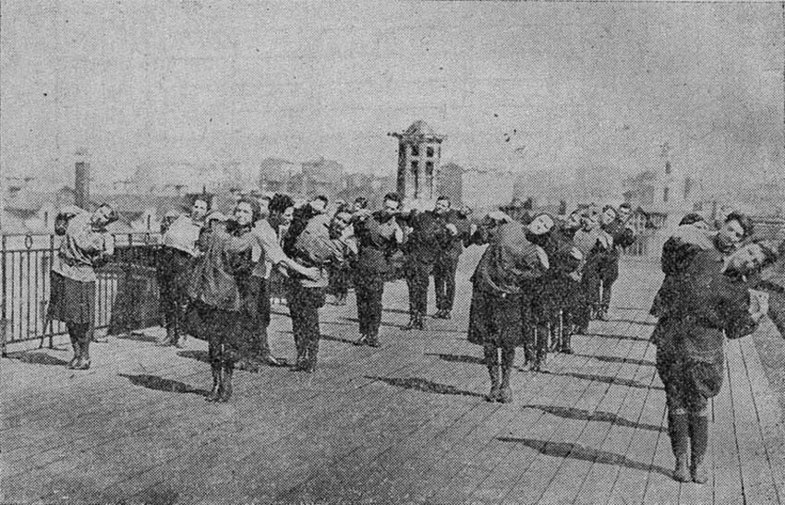
Looking at the smiling girls in the photo, I think: but they are smiling not for joining a new motor culture, but for the good weather and the fact that the authorities drove everyone out into the fresh air, where they forced them to rotate their arms under the camera. Go bad, instead of boring typewriter work! It seems to me that scientific ideas are dying because of such indifferent ideas of young girls - because of the indifference of ordinary performers who are ready to do anything: motor culture or meaningless shifting of pieces of paper from table to table, if only they would give out bread ration.
A.K. plans Gasteva - transferring the whole country to the rails of improved physiology - was grandiose, and the actions were energetic: of such research institutes, the Central Institute of Labor was the largest and most influential institution.
In a specialized store located in the building of CIT, literature on the organization of labor was sold.
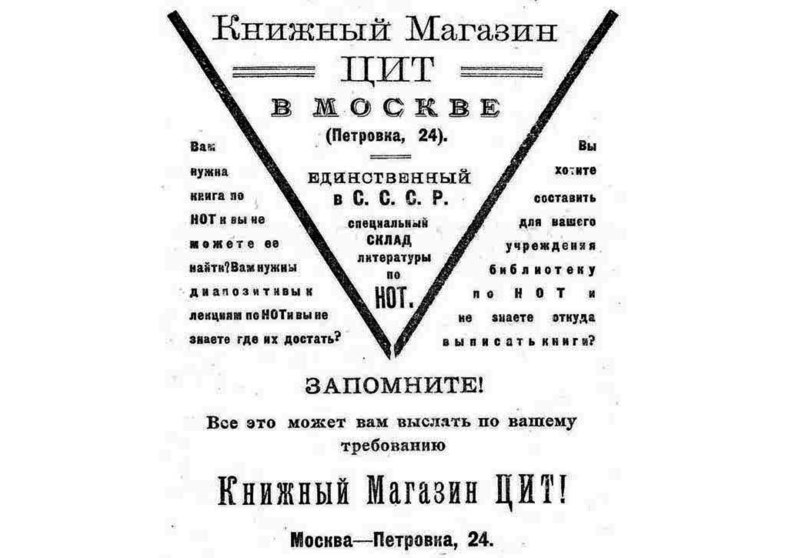
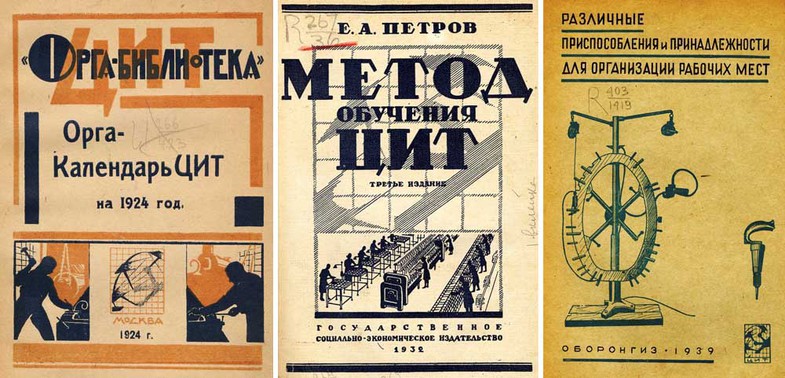
The main thing is not literature, of course, but the training of specialists and the application of labor principles developed at CIT, in practice.
The Central Institute of Labor had its own instructors — as they would say now, its representative offices — throughout the USSR.

Instructors engaged in the implementation of advanced labor methods in thousands of enterprises. Best practices were understood as training in professional skills with an emphasis on streamlining movements. The breadth of the specialties that were offered to be taught can be judged by this advertisement:
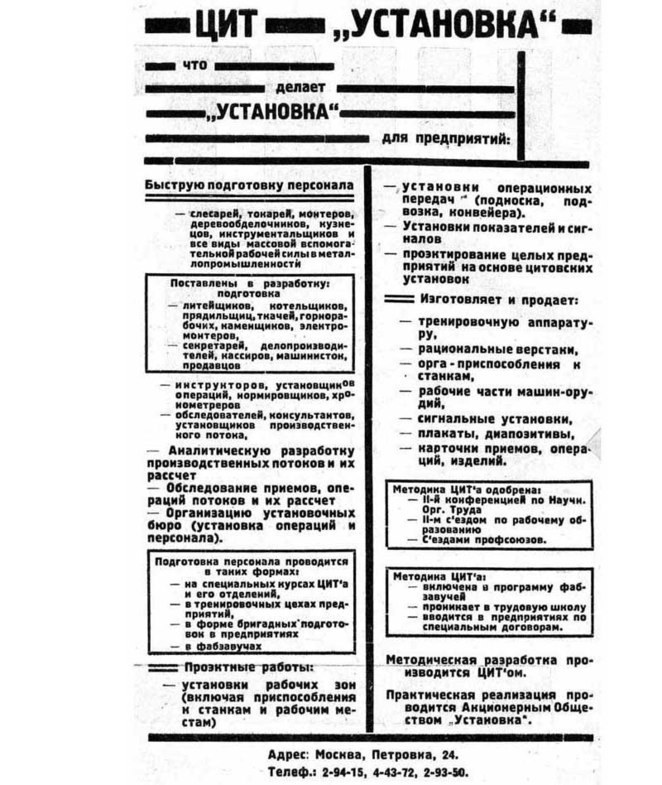
Please note: the training of secretaries, clerks, cashiers and typists has been put into development. The work of clerical workers was supposed to be improved along with the work of representatives of workers' specialties - as we see, the work management was not alien to the workers of the Central Institute of Labor. Of course, paperwork was not in the first place: what is the office there, when the industry that is growing on its feet calls for help! The country is young and huge - imagine how many irrational production movements have to be eliminated in the struggle for productivity.
The Central Institute helped the national economy with what it could, and did not hesitate to loudly declare its successes.
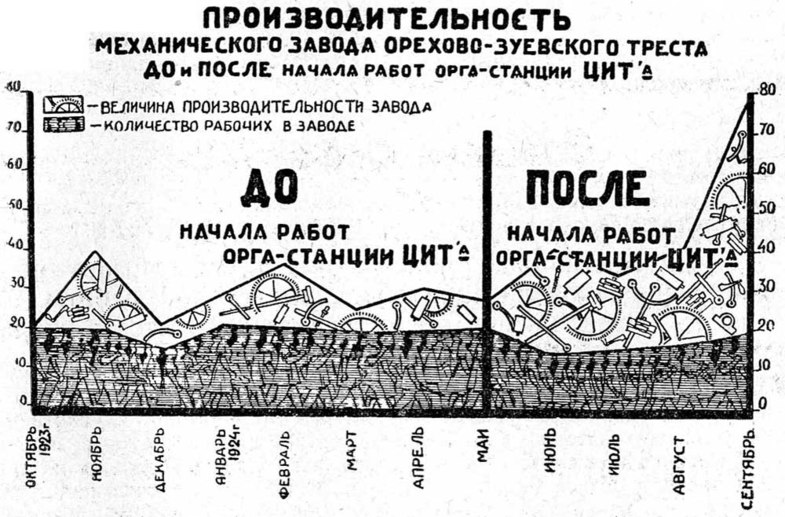
International activity also took place, also not without success.
In 1924, the Soviet delegation participated in the Prague Congress on NOT. In this regard, I even have interesting pictures.
Exhibits of the Central Institute of Labor at the Prague Congress:

Soviet delegation at the Prague Congress. Sitting (from left to right): A.K. Gastev (CIT), E.F. Rozmirovich (NKRKI - People’s Commissariat of the Workers and Peasants Inspection), I.N. Spielrein (Laboratory of Industrial Psychotechnics, tubing - People's Commissariat of Labor). Standing (from left to right): representative of Germany Dr. Piorkovsky, N.A. Bernstein (CIT), A.S. Labutin (CIT).
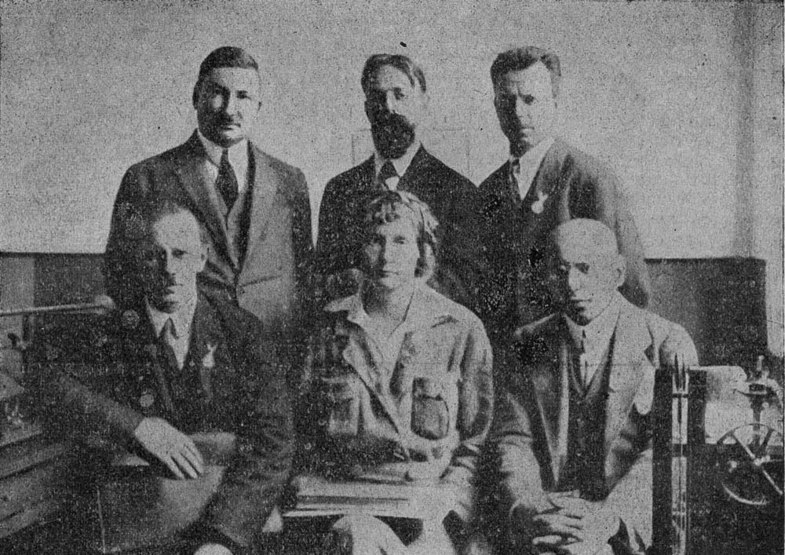
Pay attention to Elena Fedorovna Rozmirovich. In 1924 she was a representative of the NKRKI, but two years later she will head the Institute of Management Technology (ITU), which will solve approximately the same rationalization tasks as the Central Institute of Labor. So Rozmirovich’s participation in the Prague Congress is by no means accidental.
Incidentally, ITU had an undoubtedly more beneficial effect on bookkeeping than CIT, not by its scientific activity, but by the presence of a publishing house that regularly published accounting literature.

But with scientific activity, despite the abundance of scientific research organizations in the USSR, it was bad, at least at first.
One of my favorite photos. Although it is not directly related to cyclography, it is very indicative. What do you think the photograph shows?
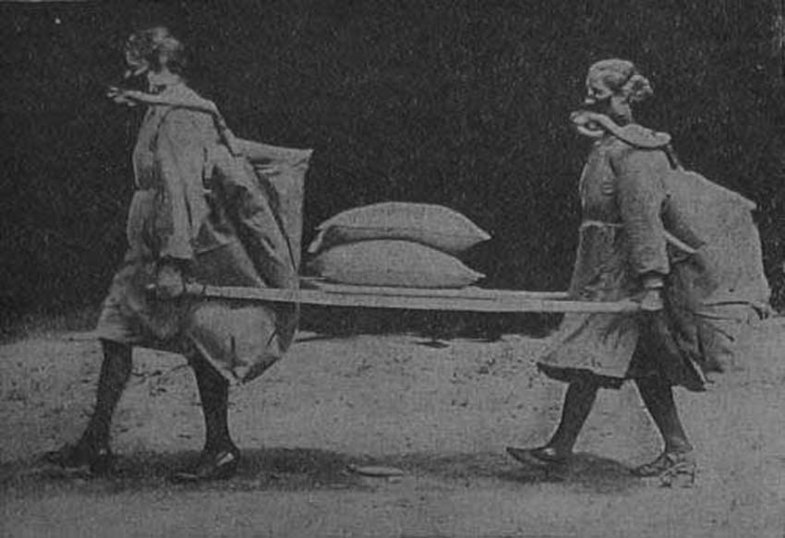
A scientific experiment is depicted in the courtyard of the Institute of Labor Protection (there was such a research institution in the USSR). The experiment was aimed at clarifying the effect of heavy weights on the female body. The subjects are heavier, while breathing in bags (in order to subsequently analyze the composition of exhaled gases, as I understand it). Perhaps this should be done experiments in medicine and physiology, but I can not perceive this photo other than comic.
However, we will return to the Prague Congress and the Soviet delegation at it.
Another notable person is Isaak Naftulevich Shpilrein , head of the laboratory of industrial psychotechnics at the People’s Commissariat of Labor.
And the man with the beard, as if stuck to his face, is Nikolai Aleksandrovich Bernstein, head of the biomechanics laboratory of CIT, inventor of a cyclographic apparatus based on a movie camera, a man considered one of the main authorities in the field of cyclography. Gastev was the head of a research institution, and Nikolai Aleksandrovich Bernstein was his chief specialist in cyclography.
So what is cyclography itself, what was it?
As I said, photographing the sequence of human movements. A camera or movie camera was taken, the object was shot at certain intervals of time. Sometimes, to set the intervals, a rotating disk with windows was used - this is how I understood the image of the device I have.
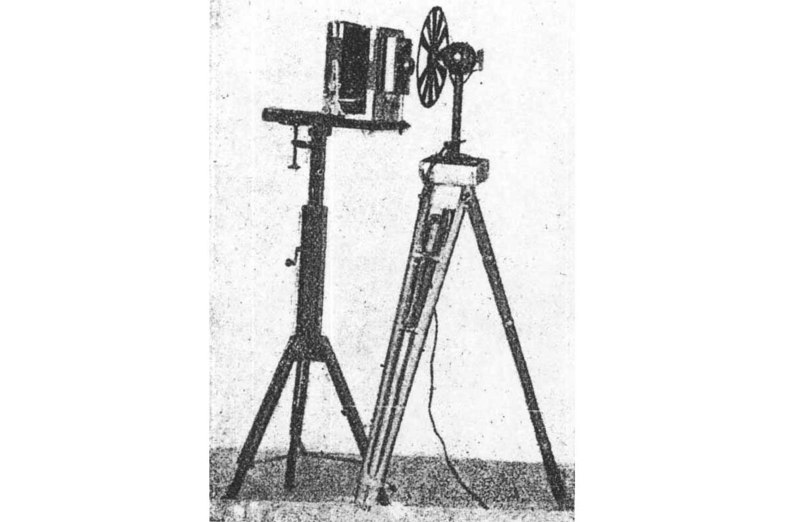
The result was an intermittent image of motion, such as approximately:

It seems that such photographing was called chronophotography , and images - chronophotograms. And the cyclography itself was carried out differently, in complete darkness: bulbs were attached to the subject’s body, the subject moved, the subject’s movements were filmed on camera.
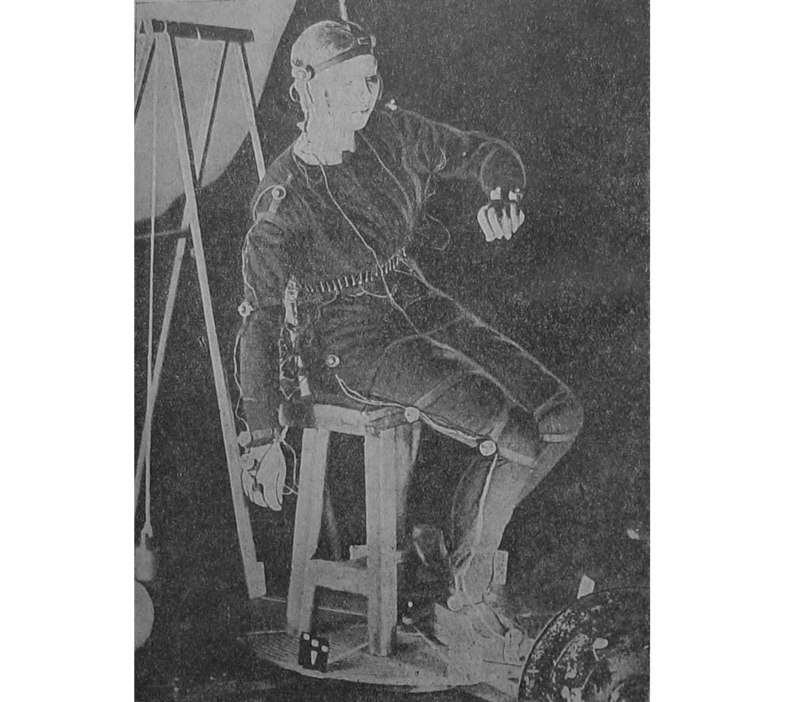
Here the light bulb is attached to the hand: presumably, the movements of the hand are examined when writing text.
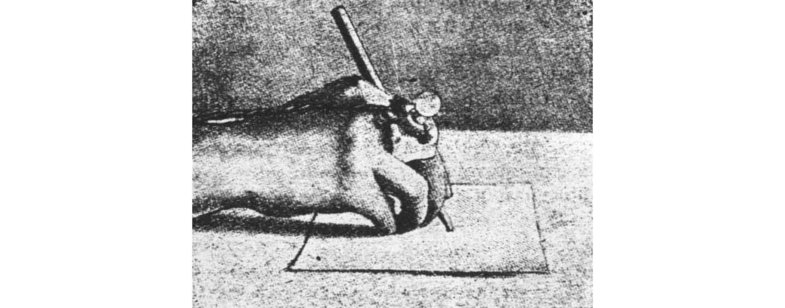
In the pictures — cyclograms — light traces from the bulbs were visible, indicating perfect movements: You
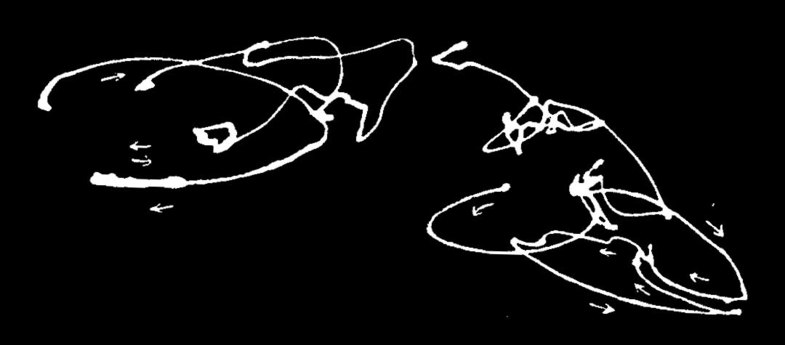
could reconstruct the movements of a person by light traces, as shown in the collage below. In the photo - the director of CITA Aleksey Kapitonovich Gastev demonstrates movements when working with a chisel.
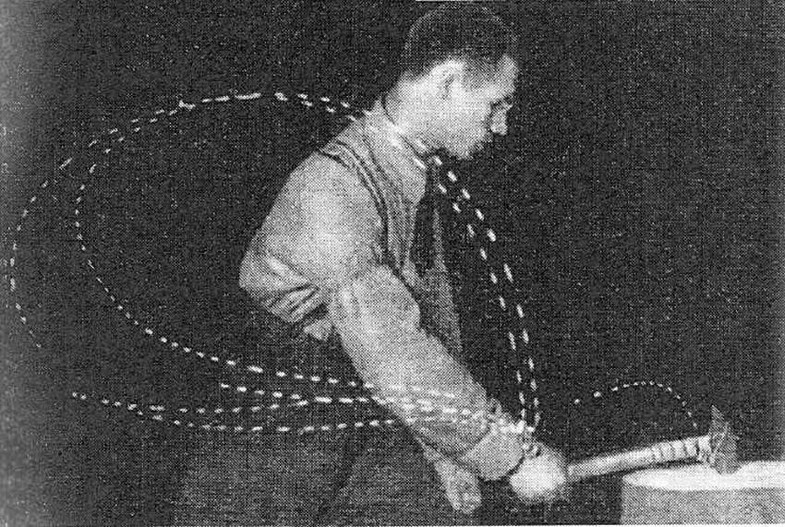
Light traces could be transferred to a plane, transforming into something like a graph:

Another, more advanced method was practiced: conversion using a wire into a three-dimensional model.

How did the workflow, including accounting, be modernized through cyclographic images? They tried to save the movement of clerical workers, because it was in this - in saving movement and due to this better organization of labor - that was the original idea.
Does the worker work not at the conveyor, but at the desk? What's the difference?! Let's organize the desk so that the clerk performs as few movements as possible: then, without a doubt, his productivity will increase.
I can not vouch for an increase in productivity, but the arrangement of writing instruments on the desktops was thought through to the smallest detail, based on human physiology!

As a result, we got a rationally organized workplace: clerk, secretary, typist, accountant.
Here is a rationally organized workplace of the storekeeper compiling the product reports:
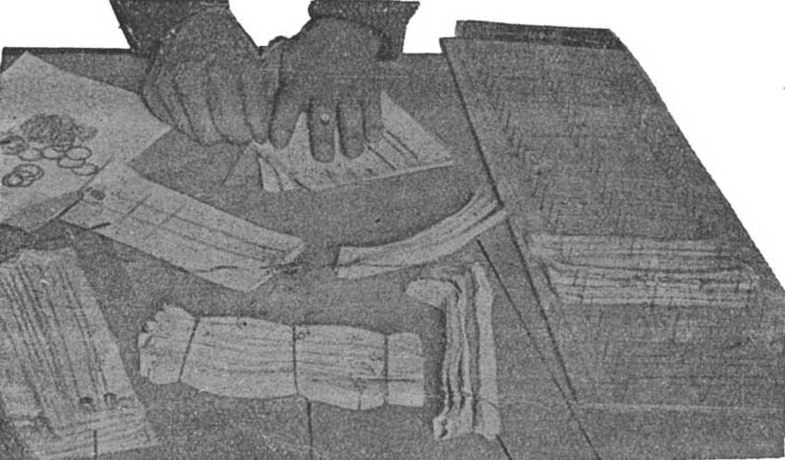
A rather strange workplace: on the left hand of the employee a file cabinet - everything is clear here, but on the right hand are some rings. I suppose the elastic bands used to pull product reports, as shown in the photo. But why it was required to fold the product reports into narrow strips, I don’t understand this; for the first time I come across this method of storing papers. Isn't it easier to put paper sheets in folders, as has always been done?
Another rationally organized office place is according to the Taylor system ( Frederick Taylor , died in 1915):

It was with us that CIT was headed by similar rationalization, headed by Alexei Kapitonovich Gastev, and in America, by other offices and other figures more internationally recognized, in particular Henry Ford (with whom Gastev was in personal correspondence). Powerful industrial and rationalization movements such as Taylorism, Fordism. Although the scientific problem was solved the same: to properly organize the workplace, to build an optimal schedule of production movements across the factory territory or individual rooms.
Not only the movements of individual workers were optimized, whole route maps were compiled:
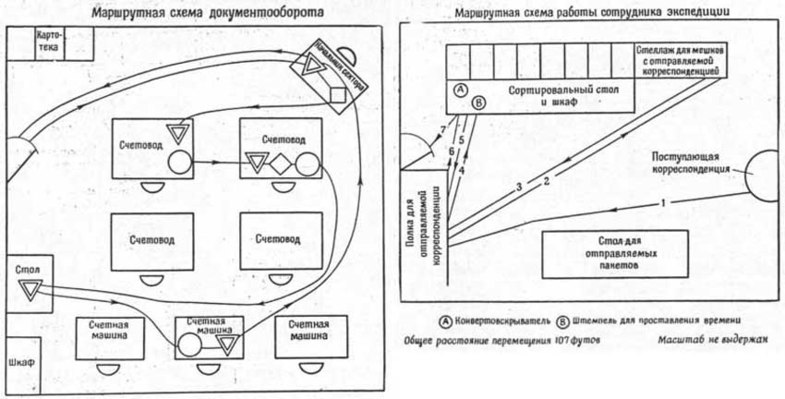
Organization of a warehouse before and after rationalization:

Now, saving body movements in the past, at least as public campaigns.
What remains of those years of uplifting years? After Henry Ford - the famous Ford conveyor (which is not surprising, because Ford solved primarily production problems). And what has been preserved from the scientific activity of Alexei Kapitonovich Gastev?
I do not know. That is, I can not judge about industry (for industry, NOT is a great blessing, there is no doubt), and the accounting footprint of Gastev and the Central Institute of Labor headed by him is invisible. Reforming bookkeeping by rearranging desks is perhaps a worthy task, but not the most promising one.
At the same time, my opinion about Alexei Kapitonovich Gastev is more likely positive than negative. Yes, I did not achieve visible success in streamlining the office, the cyclography was not in demand by the accounting department, but there are so many charisms! And an unbridled desire to do something necessary and useful for the country, which probably was not observed in lovely girls, by order of the head engaged in physical exercises on the roof of the Central Institute of Labor.
What Gastev was not worthy of was the execution in 1939. Nevertheless, the Soviet regime turned out to be incredibly scum, allowing itself to destroy such people: not even enemies, but faithful sons, who actually created the Soviet government. I will never believe that a former revolutionary, a fanatic of rationalization and a prolific writer did something so unseemly! Or maybe he began to understand that for the implementation of his ideas, the Soviets are not the best political system? No, it’s unlikely: after all, Alexei Kapitonovich was the director of a major research institution; in the early 1930s he turned around very broadly, it’s a sin to complain. Slandered or blundered too much ...
Another participant in the Prague Congress, I.N. Shpilreina, also shot, two years before Gastev.
Fate E.F. Rozmirovich and N.A. Bernstein happier.
Elena Fyodorovna Rozmirovich, after leading the Institute of Management Technology, held other managerial posts, was even the director of the State Library named after IN AND. Lenin.
In 1925, the head of the Biomechanics Laboratory of the Biomechanics of Tsitol, Nikolai Bernshtein, in 1925, shortly after the Prague Congress, moved from the Central Institute of Labor to medical research institutes, where he continued to deal with the same problem - the physiology of movements. He succeeded more in the medical field, especially since the war came, and thousands of wounded needed to restore the movement of their injured limbs. Here, the biomechanics of Nikolai Aleksandrovich Bernshtein came in handy: the author of the methodology even received the Stalin Prize for 1947, later his achievements were used in robotics.
They did not even talk about rationalizing the movements of clerks and the correct arrangement of tables in bookkeeping after the war.
Summary: it’s not enough to be a fanatic of the business and not to invent anything, you still need to understand in which area to apply the invention.
